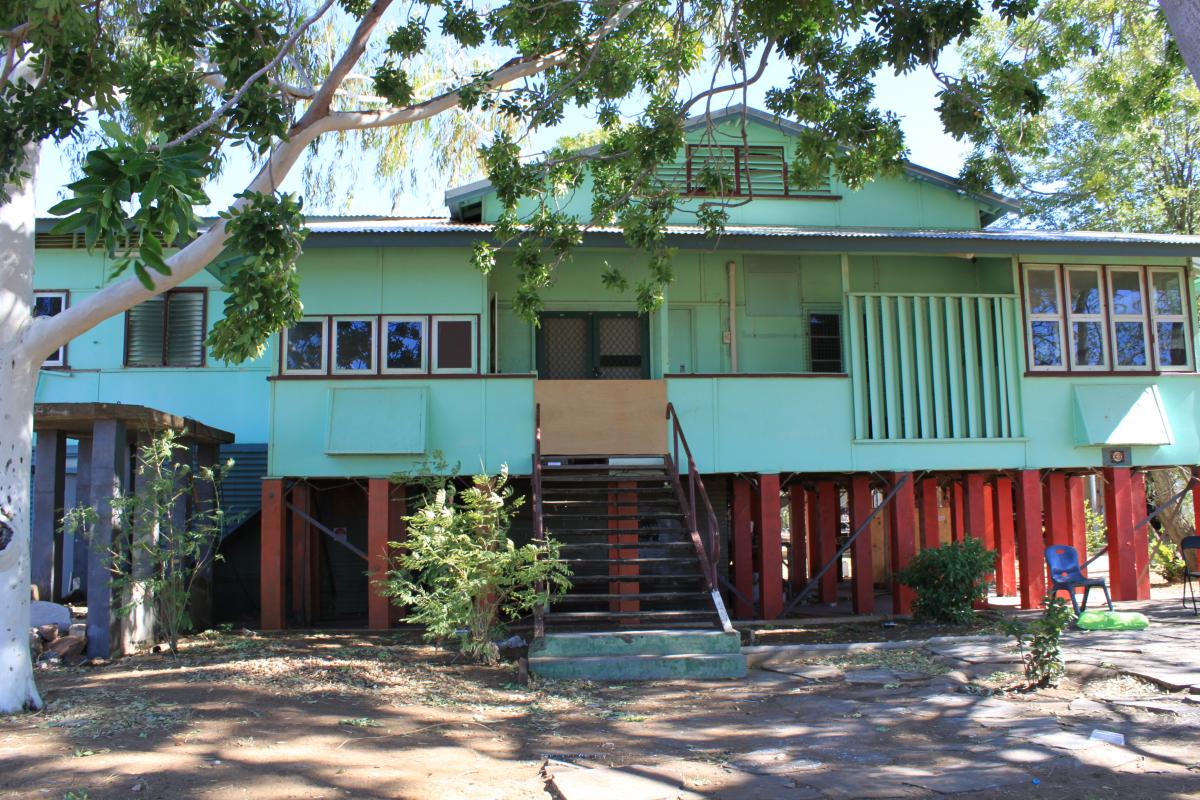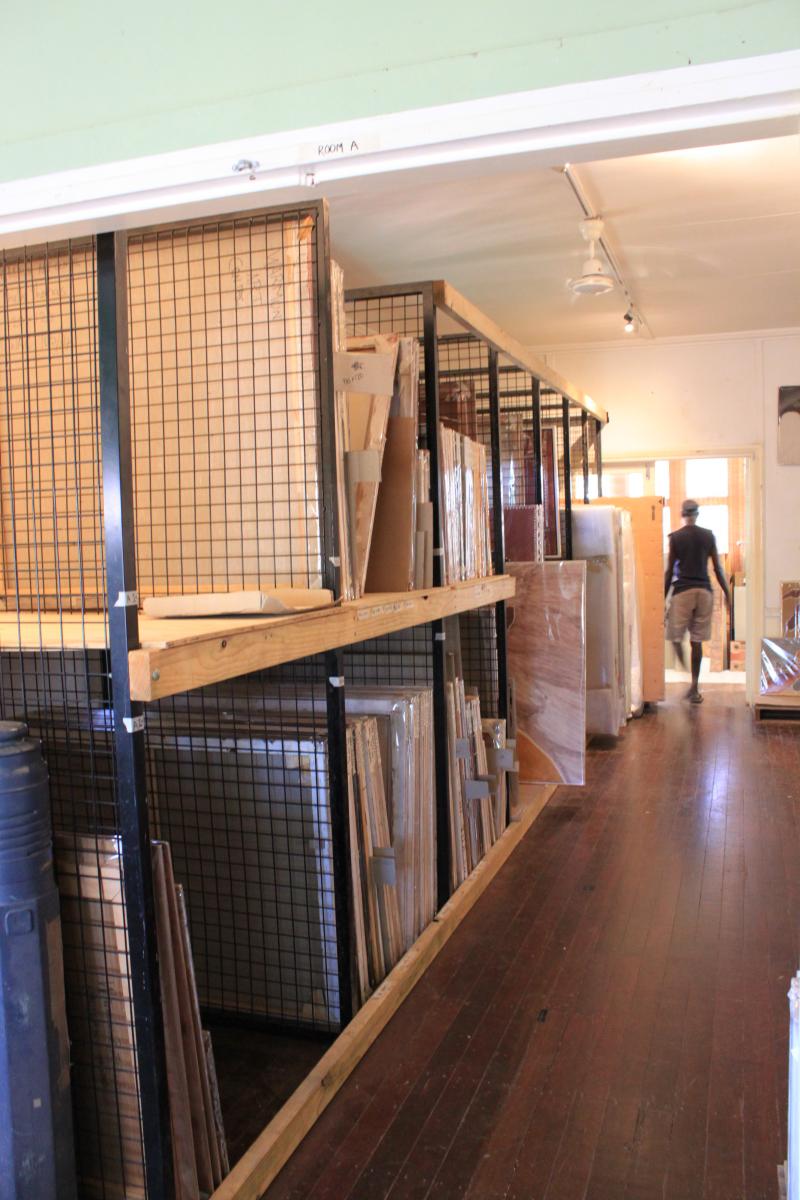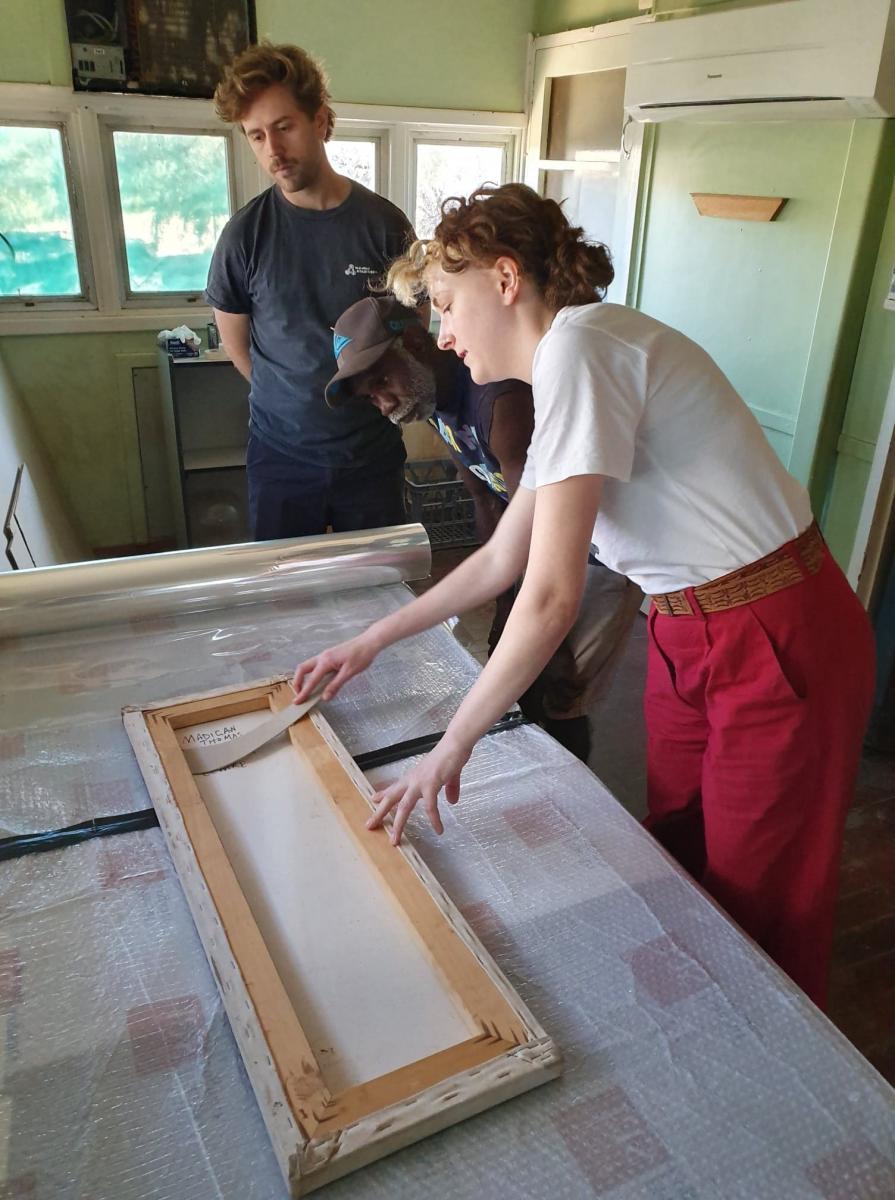Since starting my studies at the Grimwade Centre for Cultural Materials Conservation, I have been inspired by the partnership between Warmun Art Centre in the East Kimberley and the Grimwade Centre. This partnership began with flood relief in 2011. Since then, it has evolved into a relationship built on two-way knowledge transfer between Warmun Art Centre and the Gija community with student conservators at Grimwade. Warmun Art Centre and the Gija community shared their knowledge of culture and country, and the students helped and provided access to conservation and collection management knowledge, processes and practices.
In 2018, I took the on-country subject Ngarranggarni: Gija Art and Country during my studies and through this was introduced to the Gija artists and elders of Warmun. For one week under the elders’ tutelage, we were taught the significance of Australian Aboriginal art practice, culture and country. A year later I returned to the Warmun community to carry out a project that had been proposed to me by the art centre manager, Stephanie Rajalingham. Building on the partnership between the Warmun Art Centre, Gija community and the University of Melbourne’s Grimwade Centre, fellow student Toni Sampson and I carried out the Deceased Estate Storage Re-organization Project at Warmun Art Centre. I was grateful to be able to contribute to this partnership and I see potential for in-situ conservation projects to create a space for cross-cultural knowledge exchange.

Aboriginal art centres have developed in Indigenous communities as sites for economic empowerment, creative innovation and cultural practice. Often, they are the only institution in the community in which the workplace and workflow is governed by and concerned with customary law and culture. As a cultural hub for the community, art centres accumulate objects of cultural significance throughout their operation, and develop collections of value to the community and the art centre. This includes deceased estates, which are held in storage under embargo during the community’s agreed-upon period of mourning. Family members cannot discuss the deceased or view their estates until the prescribed smoking rituals and mourning protocols have been enacted, and estates require appropriate preventive conservation to ensure damage does not occur during storage.
The goal of this project, funded by the University of Melbourne’s Student Engagement Grants, was three tiered. This firstly involved a survey of the storage space available at Warmun Art Centre. Following that, we aimed to undertake a condition survey of the paintings in the deceased estates, and establish a process for relocating these paintings into temporary storage. Carried out over two weeks, the participants consolidated the storage space, removed unrelated items, documented the deceased estates and relocated them to appropriate storage areas. Location codes were created and added to the storeroom floor plan and a spreadsheet containing all documentation and information from the survey was created. Appropriate storage areas were allocated according to three categories:
- painting support, as canvases should be stored vertically and boards horizontally
- size of the painting, to avoid deformation or abrasion from stretchers or frames
- artist, to avoid dissociation of information.
This process was tested and adapted as we reoganised the 271 paintings in the deceased estates. We recorded the process through our report, created visual references for conservation terminology and created a flowchart diagram expounding the steps, types of documentation and decisions that are required when relocating paintings to temporary storage.



The work we completed during our time on site has consolidated the relationship between Warmun Art Centre and the Grimwade Centre. As a result of this project, Warmun Art Centre has been given access to conservation and collection management resources tailored to their storage spaces and collection. Warmun Art Centre is keen to continue its professional development in this area so staff can be empowered to safeguard their own cultural heritage. This project also provided valuable experience for me as a graduate and has made evident to me one of the challenges of cultural materials conservation in Australia: making conservation accessible and useful for remote and regional heritage collections.
